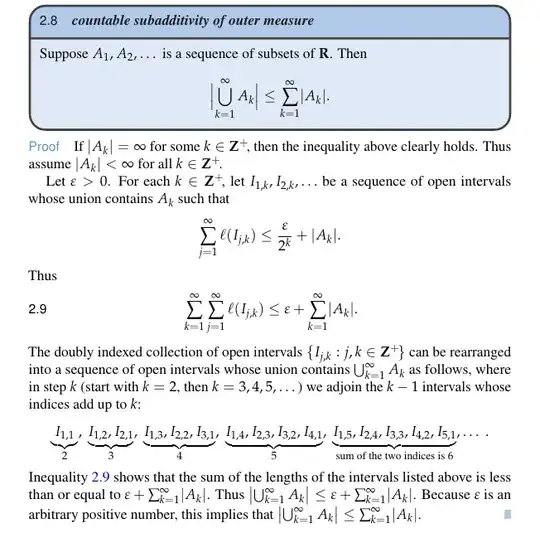I am reading Measure Theory from Sheldon Axler's Measure, Integration & Real Analysis. Here's the question that I have:
The rearrangement of $\{ I_{j,k} : j,k \in \mathbb{Z}^{+} \}$ (see proof below) is a little confusing to me. I understand that intuitively what the proof is doing is that we know that there is a function $\sigma : \mathbb{N} \to \mathbb{N}\times \mathbb{N}$ such that $\sigma (1)=(1,1)$, $\sigma(2)=(1,2)$, $\sigma(3)=(2,1)$ and so on and then we are claiming that
$$\sum \limits_{k=1}^{\infty} \mathscr{l}(I_{\sigma (k)})=\sum \limits_{k=1}^{\infty} \sum \limits_{j=1}^{\infty} \mathscr{l}(I_{j,k})$$
However I do not see how to prove this. I am not quite sure how such an rearrangement is possible. Hints will be appreciated in direction to prove this.
